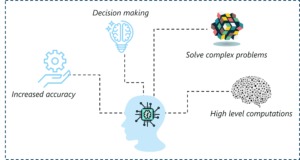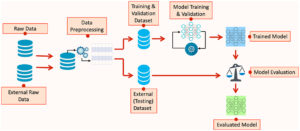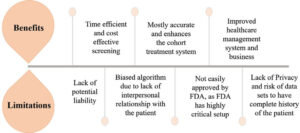The integration of artificial intelligence (AI) into healthcare systems promises to transform how medical services are delivered, making them more efficient, accurate, and personalized. However, implementing AI in healthcare is a complex process that requires careful planning, strategic execution, and ongoing evaluation. This article provides a comprehensive guide on how to effectively implement AI in healthcare systems, addressing the key steps involved, challenges to anticipate, and best practices to ensure successful deployment.
Assessing Needs and Setting Objectives
The first step in implementing AI in healthcare systems is to conduct a thorough assessment of the organization’s needs and objectives. This involves identifying specific areas where AI could add value, such as improving diagnostic accuracy, streamlining administrative processes, or enhancing patient engagement. Healthcare organizations should start by evaluating current workflows and pinpointing inefficiencies or gaps that AI could address.
Setting clear, measurable objectives is crucial. These objectives should align with the organization’s overall goals and be based on data-driven insights. For instance, a hospital might aim to reduce diagnostic errors by 20% or cut down appointment scheduling times by 30%. Clearly defined goals help guide the selection of appropriate AI technologies and provide a benchmark for evaluating their effectiveness.
Selecting the Right AI Solutions
Once the needs and objectives are established, the next step is to select the right AI solutions. This involves researching and evaluating different AI technologies, such as machine learning algorithms, natural language processing (NLP) tools, and predictive analytics. It’s essential to choose solutions that align with the identified needs and are compatible with existing healthcare systems and data infrastructure.
Healthcare organizations should consider factors such as the technology’s maturity, vendor reputation, and the quality of support and training provided. It’s also important to assess how well the AI solution integrates with Electronic Health Records (EHR) and other existing systems to ensure seamless operation and data flow.
Ensuring Data Quality and Compliance
AI systems rely heavily on high-quality data to function effectively. Therefore, ensuring that data used in AI applications is accurate, complete, and representative is crucial. This may involve cleaning and standardizing data from various sources, such as patient records, lab results, and imaging studies.
Compliance with regulations and standards is also a critical consideration. Healthcare organizations must adhere to data protection laws, such as the Health Insurance Portability and Accountability Act (HIPAA) in the United States, which govern how patient information is handled and protected. Ensuring that AI systems comply with these regulations helps mitigate risks related to data privacy and security.
Training and Change Management
Implementing AI in healthcare systems requires more than just technological integration; it also involves significant changes in workflows and processes. Therefore, training and change management are essential components of a successful implementation.
Healthcare professionals need to be trained not only on how to use the new AI tools but also on how to interpret and act on AI-generated insights. This training should be comprehensive and tailored to the specific needs of different user groups, such as clinicians, administrative staff, and IT personnel.
Effective change management strategies should be employed to facilitate a smooth transition. This includes communicating the benefits of AI to stakeholders, addressing any concerns or resistance, and providing ongoing support to ensure that users adapt to the new systems effectively.
Pilot Testing and Evaluation
Before full-scale implementation, it is advisable to conduct pilot testing of the AI systems. Pilot testing involves deploying the AI technology in a controlled environment or within a specific department to assess its performance and identify any issues.
During the pilot phase, healthcare organizations should closely monitor the system’s functionality, user feedback, and overall impact on operations. This evaluation process helps identify any adjustments or improvements needed before a wider rollout. It also provides an opportunity to refine workflows and address any integration challenges.
Scaling and Integration
Following successful pilot testing, the next step is to scale the AI implementation across the organization. This involves expanding the use of AI systems to other departments or functions and ensuring that the technology is fully integrated with existing systems and workflows.
Effective scaling requires careful planning and coordination. It’s important to manage the transition in stages, addressing any issues that arise and making adjustments as needed. Additionally, ongoing monitoring and evaluation should continue to ensure that the AI systems are meeting the defined objectives and delivering the expected benefits.
Monitoring and Continuous Improvement
Implementing AI is not a one-time event but an ongoing process. Continuous monitoring and evaluation are essential to ensure that the AI systems remain effective and relevant. This involves regularly reviewing performance metrics, user feedback, and technological advancements.
Healthcare organizations should establish mechanisms for continuous improvement, such as regular updates to AI algorithms, enhancements to data quality, and adjustments to workflows based on performance data. Staying current with advancements in AI technology and incorporating new developments can help maintain the effectiveness and competitiveness of the AI systems.
Addressing Ethical and Legal Considerations
AI implementation in healthcare also raises ethical and legal considerations that must be addressed. Issues such as algorithmic bias, transparency, and accountability are critical to ensuring that AI systems are used responsibly and equitably.
Healthcare organizations should establish policies and procedures to address these concerns, including guidelines for ethical AI use, mechanisms for monitoring and addressing bias, and clear protocols for accountability in case of errors or adverse outcomes. Engaging with stakeholders, including patients, advocacy groups, and regulatory bodies, can help ensure that AI implementation aligns with ethical standards and legal requirements.
Conclusion
Implementing AI in healthcare systems offers significant opportunities to enhance patient care, improve operational efficiency, and drive innovation. However, the process involves careful planning, strategic execution, and ongoing evaluation to ensure success. By assessing needs, selecting appropriate solutions, ensuring data quality, providing training, and addressing ethical considerations, healthcare organizations can effectively integrate AI technologies and realize their full potential. As AI continues to evolve, its role in healthcare will likely expand, offering new possibilities for improving health outcomes and advancing medical research.





